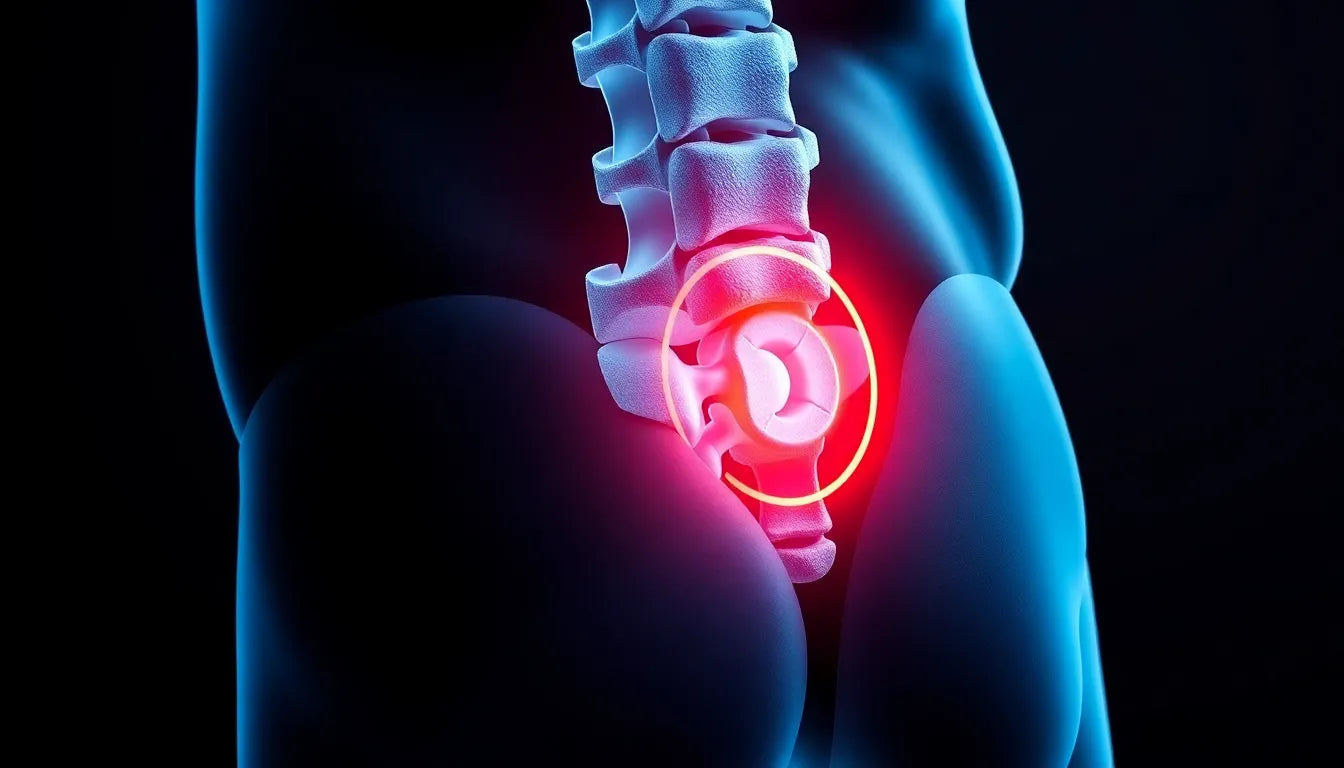Have you ever wondered if that nagging back pain could be more than just a minor inconvenience? For many, a herniated disc is a silent yet potentially severe condition that can have significant implications for one's health. While back pain is a common complaint, not everyone is aware of the dangers a herniated disc can pose if left untreated.
A herniated disc occurs when the soft, jelly-like center of a spinal disc pushes through a crack in its tougher exterior casing. This condition is more common than many realize, affecting a significant portion of the population, particularly as they age. While some people may experience little to no symptoms, others can suffer from debilitating pain and discomfort. The real concern arises when individuals ignore these symptoms, unaware of the potential risks that can escalate over time.
The purpose of this post is to delve into whether a herniated disc can be dangerous. We'll explore medical insights, examine the risk factors associated with this condition, and discuss prevention strategies that can help mitigate its impact. By understanding the potential threats a herniated disc can pose, individuals can make informed decisions about their health and seek appropriate care before the condition worsens.
While it's easy to dismiss back pain as a temporary issue, it's crucial to recognize the signs and take action. Ignoring a herniated disc can lead to serious health complications, including chronic pain, nerve damage, and even paralysis. With timely intervention and proper management, many of these risks can be minimized, allowing individuals to maintain their quality of life.
In the sections that follow, we'll provide an in-depth look at the medical risks associated with a herniated disc, as well as the importance of early treatment. We'll also highlight common risk factors and preventive measures that can help reduce the likelihood of developing this condition. By being proactive and informed, you can take control of your spinal health and avoid the silent threat of a herniated disc.
Understanding the medical risks of a herniated disc
A herniated disc can be a ticking time bomb for your health if not addressed promptly. One of the most pressing concerns is the potential for long-term chronic pain. The pain can vary in intensity, but when a herniated disc presses on nearby nerves, it can cause persistent discomfort that significantly impacts daily life. In severe cases, the pain can extend beyond the back, radiating into the arms or legs, depending on the location of the affected disc.
Ignoring a herniated disc also increases the risk of permanent nerve damage. When nerve roots are compressed for extended periods, it can lead to a loss of sensation or muscle weakness in the areas served by those nerves. This nerve damage can sometimes be irreversible, making early intervention crucial.
Another serious complication is the potential for paralysis. While rare, a herniated disc can severally compress nerves in the spinal cord, leading to paralysis if not treated. Additionally, some individuals may experience urinary or fecal incontinence due to nerve compression, further underscoring the importance of timely medical attention.
Degenerative changes in the spine are another concern. Over time, the continuous pressure and inflammation from a herniated disc can lead to degenerative disc disease, which may cause further spinal issues and exacerbate existing pain.
The necessity of early treatment
Timely treatment of a herniated disc is vital to prevent serious health issues. Early intervention can alleviate pain, restore function, and prevent permanent damage. A personalized care plan, often involving a combination of physical therapy, medication, and lifestyle changes, can effectively manage symptoms and promote healing.
Physical therapy plays a pivotal role in treatment by strengthening the muscles supporting the spine, improving flexibility, and reducing pain. In some cases, pain management techniques, such as epidural steroid injections, may be recommended to reduce inflammation and provide relief.
In rare instances where conservative treatments fail, surgical intervention might be necessary. Procedures like a microdiscectomy can relieve pressure on the nerves and provide significant pain relief. However, surgery is typically considered a last resort after exploring all other options.
Identifying risk factors and implementing prevention strategies
Understanding the risk factors associated with herniated discs can help in taking preventive measures. Physically demanding work or improper lifting techniques are common culprits. Jobs that require heavy lifting or repetitive movements can put undue stress on the spine, increasing the risk of disc herniation.
Age and gender also play a role, with middle-aged men being more susceptible. As we age, the discs in our spine naturally lose some of their water content, making them less flexible and more prone to tearing or rupturing.
Lifestyle choices, such as maintaining a healthy weight and avoiding smoking, are crucial. Excess body weight puts additional strain on the spine, while smoking can decrease the oxygen supply to the disc, hindering its ability to heal.
Preventive measures include maintaining a healthy weight, practicing proper lifting techniques, and incorporating regular exercise and stretching into your routine. These practices not only reduce the risk of a herniated disc but also promote overall spinal health.
Recognizing symptoms and seeking diagnosis
Recognizing the symptoms of a herniated disc is key to preventing complications. Common symptoms include localized pain, numbness, and muscle weakness. Some individuals may experience tingling, aching, or burning sensations, particularly if the disc is pressing on a nerve.
Early diagnosis is crucial. If you suspect a herniated disc, seeking medical evaluation is essential. Diagnosis typically involves a physical examination and imaging tests, such as MRI or CT scans, to confirm the presence and severity of the herniation.
By understanding the risks and taking proactive measures, you can effectively manage a herniated disc and maintain your quality of life. Early intervention and informed decisions are your best defense against the silent threat of a herniated disc.
Comparative treatment options for herniated discs
When it comes to addressing a herniated disc, a variety of treatment options are available, each with its own set of benefits and drawbacks. Understanding these options can help individuals make informed decisions about their health care.
Conservative treatments are often the first line of defense. These include physical therapy, rest, and medication. Physical therapy focuses on strengthening the muscles around the spine, improving flexibility, and reducing pain. Rest and over-the-counter pain medications can also provide relief and allow the body to heal naturally.
Surgical interventions may be considered when conservative treatments fail to alleviate symptoms. Procedures like microdiscectomy or laminectomy are designed to remove or repair the damaged disc material, relieving pressure on the nerves. While surgery can offer significant relief, it comes with risks such as infection or complications from anesthesia, and a longer recovery period.
Alternative therapies, such as chiropractic care and acupuncture, are also popular among those seeking non-invasive treatment options. Chiropractic adjustments aim to realign the spine and reduce nerve pressure, while acupuncture is believed to stimulate the body’s natural pain-relief mechanisms. However, the efficacy of these treatments can vary, and they may not be suitable for everyone.
Below is a comparison of the pros and cons of these treatment options:
| Treatment | Pros | Cons |
|---|---|---|
| Conservative Treatments | Non-invasive, cost-effective, promotes natural healing | May take longer to see results, not effective for severe cases |
| Surgical Interventions | Quick relief, effective for severe cases | Invasive, risk of complications, longer recovery |
| Alternative Therapies | Non-invasive, holistic approach | Varied effectiveness, may not be covered by insurance |
Conclusion
In conclusion, a herniated disc can indeed be a silent threat to your health. If left untreated, it can lead to chronic pain, nerve damage, and other serious complications. The key to managing a herniated disc effectively lies in early diagnosis and intervention. By exploring the various treatment options available, individuals can find a path that best suits their needs and lifestyle.
Preventive measures, such as maintaining a healthy weight, practicing proper lifting techniques, and engaging in regular exercise, are crucial in reducing the risk of herniated discs. By being proactive and informed, you can take charge of your spinal health and prevent the silent threat of a herniated disc from affecting your quality of life.
Frequently Asked Questions
Can a herniated disc heal on its own?
In some cases, a herniated disc can improve with rest and conservative treatment, but medical evaluation is crucial to ensure appropriate care and prevent further complications.
What activities should be avoided with a herniated disc?
It is advisable to avoid heavy lifting, high-impact exercises, and activities that strain the back, as these can exacerbate the condition and delay healing.
How is a herniated disc diagnosed?
Diagnosis typically involves a physical exam and imaging tests such as MRI or CT scans, which help confirm the presence and severity of the herniation.
Are there non-surgical treatments for a herniated disc?
Yes, non-surgical treatments include physical therapy, pain management, and lifestyle modifications, all of which can help alleviate symptoms and promote healing.
What are the long-term effects of an untreated herniated disc?
If left untreated, a herniated disc can lead to chronic pain, nerve damage, and decreased mobility, underscoring the importance of timely medical intervention.


















